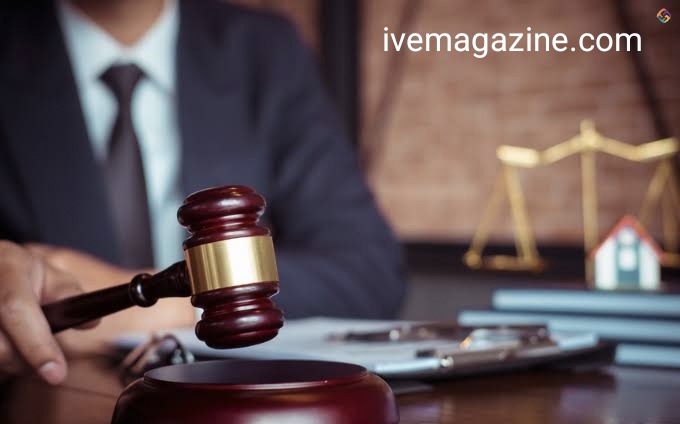The ashcroft capital lawsuit has garnered attention in real estate circles and legal blogs alike. In this deep dive, we will explore essential facts, legal principles, and outcomes, while ensuring clarity and authority. Transitioning between sections, readers will find a structured breakdown of the case, its implications, and lessons learned.
1. Overview of the Ashcroft Capital Lawsuit
Ashcroft Capital, a prominent private equity firm specializing in multifamily real estate, faced legal challenges after a dispute arose concerning alleged misrepresentations in its investment offerings. Investors claimed that the firm failed to provide accurate financial disclosures, leading to substantial losses. This lawsuit examines credibility in investment communications, and it reveals how transparency and compliance play pivotal roles.
2. Background and Timeline of Events
- Initial Investment Phase: Investors were invited to a fund managed by Ashcroft Capital.
- Dispute Raised: Complaints started about inconsistencies between promised returns and actual performance.
- Legal Action Filed: Plaintiffs alleged breaches of fiduciary duty and violations of securities regulations.
- Court Proceedings: Both parties exchanged motions, affidavits, and discovery documents.
- Current Status: Pending motion outcomes and possible settlement negotiations.
By mapping the chronology, we track how the case matured, noting key developments that shaped investor expectations and regulatory scrutiny.
3. Legal Issues at Stake
The ashcroft capital lawsuit centers around two main legal questions:
- Fiduciary Duty Allegation: Did Ashcroft Capital act in the best interest of its investors?
- Securities Disclosure Claims: Were all material facts disclosed clearly and accurately?
These issues point to broader themes in investment law—such as duty of care, materiality, and regulatory compliance. Understanding them reveals why this case matters beyond the parties involved.
4. Fiduciary Duty Explained
A fiduciary duty requires managing assets solely for investors’ benefit. When that duty is breached, investors may take legal action. In this lawsuit, plaintiffs claim Ashcroft Capital:
- Used investor funds in ways that were not fully transparent.
- Omitted crucial details about fund performance or risks.
- Failed to address investor concerns in a timely manner.
These are serious breaches that can lead to heavy penalties and reputational damage.
5. Securities Disclosure and Material Misrepresentation
Legal frameworks like the Securities Exchange Act mandate that all significant risks and material facts be disclosed to investors. In the ashcroft capital lawsuit, plaintiffs assert that:
- Financial projections were overly optimistic.
- Some risk disclosures were buried or omitted.
- Performance data differed meaningfully from actual outcomes.
If proven, these omissions can constitute fraud or misrepresentation, potentially resulting in investor restitution and regulatory fines.
6. Court Proceedings: Key Developments
Litigation progressed through several stages:
- Filing of Complaint: Detailed allegations were documented.
- Ashcroft’s Response: The firm denied wrongdoing, citing careful disclosures and professional diligence.
- Discovery Phase: Both sides exchanged emails, internal memos, and financial analyses.
- Summary Judgment Motions: Each party filed motions arguing the other lacked sufficient evidence.
Experimenting with legal tactics, both parties aimed either to narrow the case’s scope or reach an outright resolution before trial.
7. Implications for Investors
The ashcroft capital lawsuit offers broader lessons:
- Due Diligence: Investors should scrutinize fund disclosures closely.
- Red Flag Awareness: Inconsistencies in documentation or verbal assurances warrant further questioning.
- Legal Recourse: Understanding filing deadlines and legal remedies is essential for protecting investments.
Ultimately, this case highlights how vigilance and legal awareness can safeguard investor interests.
8. Industry Response and Commentary
Commentators in legal and real estate circles have emphasized:
- The importance of transparent investor communications.
- The growing regulatory focus on private investment disclosures.
- The ripple effect this case may have on future fund offerings.
Law firms have also noted that “fund managers must revisit their compliance protocols,” ensuring clear, documented disclosures at every stage.
9. Possible Outcomes and Scenarios
Looking at potential resolutions:
- Settlement Agreement: Often chosen to avoid drawn-out litigation.
- Court Verdict: Could establish legal precedent concerning disclosure duties.
- Regulatory Action: A Securities regulator may conduct its own probe.
- Policy Changes: Ashcroft Capital may revise its disclosure guidelines proactively.
Each scenario carries different consequences for the firm and broader ecosystems.
10. What Investors Should Consider Now
If you’re invested with Ashcroft Capital or similar firms:
- Review Investment Documents Immediately: Check accuracy and disclosure sufficiency.
- Track Case Developments: Stay updated via court filings or reputable legal news sources.
- Ask Direct Questions: Seek clarity on performance data and risk factors.
- Consult Legal Advisors: If you suspect omissions, talk with financial or legal counsel.
By taking proactive measures, investors can better protect themselves in uncertain circumstances.
11. Transition to Broader Legal Landscape
The ashcroft capital lawsuit connects to evolving legal standards around private fund transparency and fiduciary accountability. Consequently, it serves as a case study for both regulatory compliance and investor due diligence practices.
12. Summary
The ashcroft capital lawsuit sheds light on the crucial role of honesty and clarity in investment offerings. It demonstrates why fiduciary duties matter, how securities laws shape investor protections, and how legal accountability reinforces market confidence. As the case unfolds, stakeholders should remain alert, informed, and prepared to act responsibly.
Frequently Asked Questions (FAQ)
Q1: What is the ashcroft capital lawsuit about?
A: It involves investor claims that Ashcroft Capital misled them through incomplete disclosures and breached fiduciary duties related to their real estate investments.
Q2: Who filed the lawsuit?
A: A group of investors who alleged their investment returns didn’t match pitch materials and that material risks were omitted.
Q3: What legal issues are central in the lawsuit?
A: Breach of fiduciary duty and securities misrepresentation/disclosure failures.
Q4: Could investors recover money?
A: Yes—if plaintiffs prove misrepresentation or negligence, courts may award damages or ordering fund restatements.
Q5: Is this case affecting other investment firms?
A: Many firms are re-examining disclosure processes to improve transparency and avoid similar claims.
Q6: How can I follow future updates on this lawsuit?
A: Watch reputable legal news outlets, court filing databases, or statements from Ashcroft Capital.
Conclusion
By blending legal analysis with practical guidance, this article unpacks the ashcroft capital lawsuit comprehensively. Whether you’re an investor or industry professional, staying informed and critically evaluating fund communications remain essential. Remember to keep up-to-date, ask questions, and consider legal counsel when needed.



